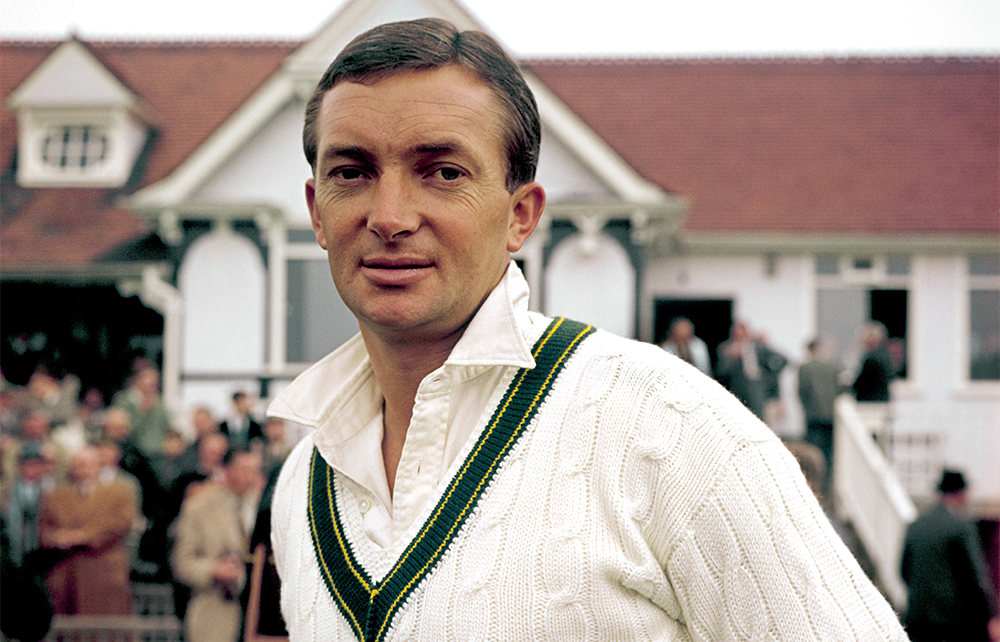Some books have good titles. Many books, sadly, have terrible titles. But a few rare books have the perfect title – the one that tells you briefly what the book is about, and also whether you want to own it. Richie Benaud’s Blue Suede Shoes is one such. If that title grabs you, you should go out and buy it now, because the book is brilliant. If it doesn’t, you have probably stopped reading this review already and turned over to Melissa Kite.
Either you love Blofeld’s ‘My Dear Old Thing’ eccentricities or you want him slowly roasted over an open fire
Harry Ricketts is a poet and critic who was born in London but has lived in New Zealand since 1981. David Kynaston is probably best known as the author of doorstop social histories about the 1950s and 1960s, with titles like Family Britain 1951-57 and Modernity Britain 1957-62. My mother, who died late last year aged just 92, loved them and read them all several times. But Kynaston also has a profitable sideline in quirky cricket histories: WG’s Birthday Party was one (it’s superb), and a couple of years ago he published Arlott, Swanton and the Soul of England Cricket with my old friend the late Stephen Fay.
Kynaston, I would guess, is an Arlott man, and so am I: I still have PTSD from reading Swanton’s unimaginably snobbish and pompous columns in the Telegraph in the 1990s. One of the themes of this book is how the public school and amateur ethos, which, even after the abolition of the distinctions between amateurs and professionals in the early 1960s, meant that former amateurs were far more likely to be appointed captain of England than horny-handed sons of toil, held back England cricket for decades. That’s all over now, thank God, and not before time.
The bulk of the book, though, is dedicated to a single Ashes Test, the fourth Test of 1961 at Old Trafford. It’s so long ago that you would need to be in your seventies (as both Kynaston and Ricketts are) to have any coherent memory of it; and they have been assiduous in supplying both contemporary accounts of the play and a few with the benefit of hindsight. Written mainly in the present tense, these chapters are sparkling. If you want to know what Arlott or Swanton said on air or wrote in the following morning’s newspapers, it’s all here.
To cut a very long story short, Australia won by 54 runs; but the game had previously twisted and turned, with more subplots than the gnarliest Hollywood thriller. The central figures in the drama were the two captains: Peter May and Richie Benaud. May was a dry old stick even then. Younger readers may remember his disastrous phase as England’s chairman of selectors in the 1980s, during which he appointed his godson to the captaincy and generally showed a lack of empathy verging on the pathological. Benaud was a fair batsman, a leg-spinner of great skill and the captain of your dreams. ‘If you were trying to clone a captain, Benaud’s would be the DNA you would want’ – words of mine, quoted in the frontispiece, a considerable thrill of its own.
And the blue suede shoes? It’s barely more than a footnote in the book, but it operates well as a metaphor for the whole work. At the end of the fourth day, Benaud went out to look at the wicket wearing a pair of blue suede shoes:
It is probably fanciful to suppose that Benaud bought the shoes, is wearing them now, as a deliberate nod to Elvis’s mega-hit a few years ago with the Carl Perkins song, but he just conceivably might. That’s the thing with Benaud – he preserves a degree of enigma behind the public persona. It is impossible to imagine his opposite number, May, wearing suede shoes at all, let alone blue ones.
The authors say they have been wanting to write this book since they met at school in 1968; it is to our imperishable benefit that they have finally got round to it.
Henry Blofeld’s Sharing My Love of Cricket isn’t such a Marmite title, although Blofeld himself is the ultimate in Marmite personalities – either you love his ‘My Dear Old Thing’ eccentricities or you want him slowly roasted over an open fire. His books, of which there have been many, have agonising punning titles like Cakes and Bails and a sub-Wodehouse style without a trace of the Master’s wit or grace. Their smugness could power the national grid.
But Blofeld, now 84, seems to have mellowed – or maybe leaving the commentary box has given him a much needed dose of humility – because this book is a great deal better than I expected. He tells all the same old stories, no doubt for the umpteenth time, but for possibly the first time the ego is in service to the material, not the other way round. There’s no doubting his great love of the game, its practitioners and its chroniclers, for this is a generous, warm-hearted book. I couldn’t have been more surprised if it had leapt off the table and bitten me on the ankle. Actually, given some of the reviews I have written of his previous books, I’m quite surprised it didn’t. Anyway it is highly recommended for cricketers of every stripe.







Comments